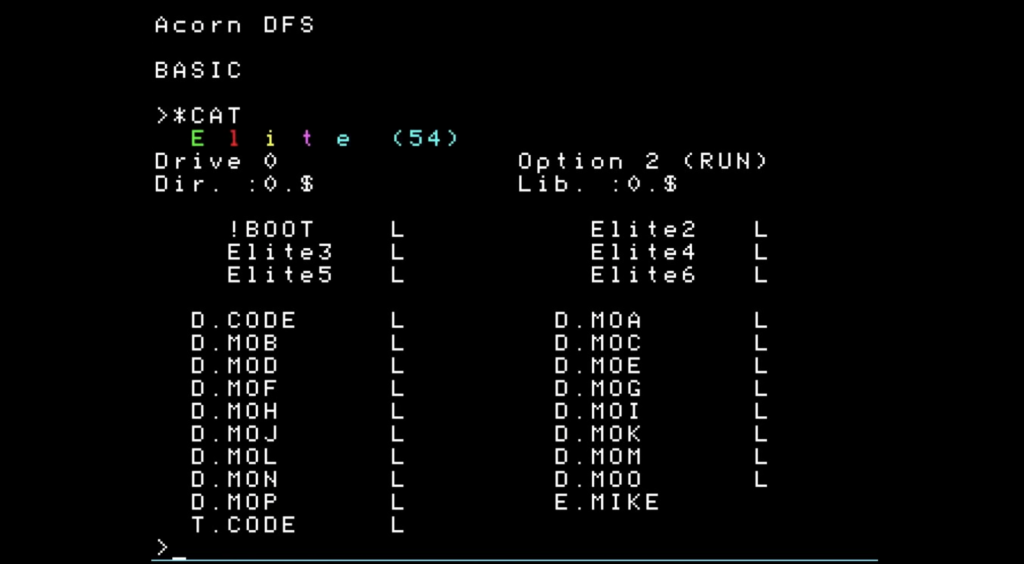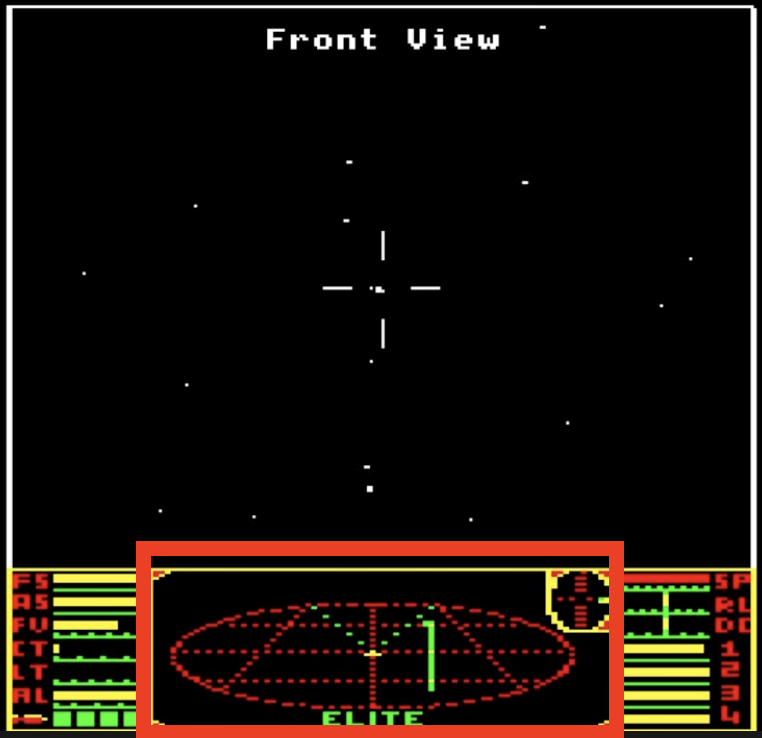Elite (Acornsoft, 1984) at its core is a space simulator game set in a procedurally generated universe. Despite the technical limitations of the early 1980s, the developers were able to create a game with depth and variety. Using faster than light travel, the player’s avatar hops between space stations to trade goods and commodities. Along the way, the player has to fight against hostile space pirates, and if the player happens to be carrying illicit goods, galactic law enforcement too. After docking on a space station, random missions may also appear, which the player can decide to accept or reject. These missions range from hauling a specific good or commodity to a certain star system to carrying out contracts for militaries. What I find most interesting (and what makes it a great game) is how innovative the developers tried to be. With Elite, Acornsoft pushed the boundaries of what gaming was, both from a hardware and software perspective. It wouldn’t be an understatement to say that this game laid the groundwork for many space and flight simulation games that followed.
Elite was developed in a time where computing power was extremely limited. To put into perspective the level of technology that was available to the developers of Elite, point and click functionality was only made available to the public in the same year as the game’s release, with the launch of the Apple Macintosh. The BBC Micro, the computer which Elite launched on only had an 8-bit processor. Standard modern computers operate on a 64-bit processor meaning that they are able to process eight times the amount of data per cycle, as well as having more cycles per second (greater clock speed). For the time, it was unheard of to attempt to run a game with eight galaxies, each with 256 star systems. Nonetheless, the developers pushed forward using innovative solutions to overcome technical shortcomings. For example, spaceships in Elite are all designed to be symmetrical. This allowed the memory of the computer to only have to store vectors for one half of a spaceship, consequently reducing the memory requirement by a half (the other half is then mirrored). Games of different genres still use this technique today.

Continuing the theme of hardware, the developers of Elite actually tried porting the game to many different consoles and devices, including the Commodore 64 and Nintendo Entertainment System (NES). However, this was not simply a copy and paste exercise. The developers continued pushing the limits of each specific device that the game was ported to. For instance, if you played Elite on the NES, you would have access to a larger library of possible missions as the NES had greater memory capabilities than the BBC Micro or if you played on the Commodore 64 you may have access to fewer ship upgrades. This added unique depth and character to the game depending on which device you played it on. This relentless dedication to pushing the boundaries and making Elite as complete as possible is what makes it such a good game.

Acornsoft’s efforts to push the boundaries of the available hardware enabled Elite to also push the boundaries of its software elements. First and foremost, in an era where games tend to try and do one thing well (think Tetris, which was released in the same year, or Mario Bros, the year earlier), Elite went a different way. The player is able to mine minerals from asteroids, trade space brandy, fight aliens, escape space pirates, and more. It caters to many playstyles and can fit into many genres. Depending on how you play the game, Elite could fall under a management game (if you are aiming to be a space merchant) or a combat flight simulator. This breadth of available activities coupled with the large-scale map may in fact be the first example of an open world game. Other novel software features include the radar at the bottom of the screen, a feature which is now a staple in many modern games. Furthermore, despite receiving much criticism during the early stages of development for not having a 3-life limit (this was seen as the industry standard at the time), Acornsoft stuck to its initial vision of not placing a life limit on players. These innovative software features in Elite are most likely responsible for inspiring many games of the current generation.

To conclude, I highly recommend Elite not only due to the enjoyment that one gets from the game but also how instrumental it was in shaping the industry. Acornsoft endeavored to push the limits of hardware whilst also bringing fresh gameplay mechanics cementing Elite’s place in the history of gaming.
